As the energy efficiency of homes becomes a higher priority for Canadians, many are trying to decide if a Net Zero Home is right for them. With the ease of information sharing these days, there are also a lot of myths about these high-performance homes. As a result, these myths sometimes cause confusion about what Net Zero Homes really are and how they work.
So, in this blog post we debunk the top 9 myths about Net Zero Homes in Canada and explain what makes them the ultimate in comfort and efficiency.
Myth 1: Net Zero Homes can’t withstand Canadian winters
One of the most common myths we hear about Net Zero Homes in Canada is that they can’t withstand our climate’s extreme cold and lack of light during the winter. They absolutely can! Today’s building science ensures that Net Zero Homes are designed to accommodate Canada’s climate, even in areas with sustained cold temperatures.
Most Net Zero Homes are connected to the electricity grid, and many are also connected to the gas network. A Net Zero Home (not a Net Zero Ready Home) uses on-site renewable energy systems (most often solar electric panels) to provide energy (usually electricity) to the home. Most solar electric systems will produce excess electricity in the summer, when the home’s energy needs are usually lower, which is sent back to the grid. In the winter, when it takes more energy to operate the home, or on a cloudy day when the solar electric system isn’t generating much electricity, the home draws its power from the electricity grid and/or gas connection. When looking only at the electricity consumption and generation, the “net” result over the course of the year is zero. This is called “Net Metering” by the electricity utilities, which is available in most provinces.
You can learn more from NRCan’s Planning & Decision Guide for Solar PV Systems.
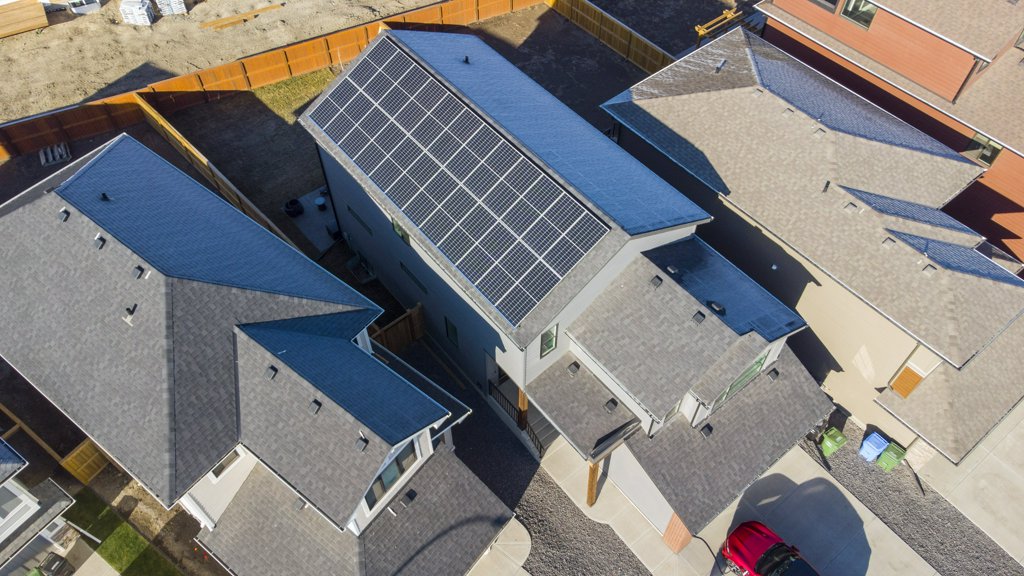
Aerial shot of solar panels on Net Zero Home by Avalon Master Builder, Calgary, AB
Some homeowners choose to equip their Net Zero Homes with batteries. These batteries store electricity on days when there’s surplus generation from the solar electric panels, which is then used when your electricity consumption is more than what the panels are generating. When the batteries are empty, your home will begin drawing electricity from the grid.
Net Zero Homes are built to higher standards than conventional homes to better withstand Canadian winters and our increasingly hot summers. They’re more durable, boasting high-performance windows and better insulated walls and roofs, with significantly better airtightness which prevents air leakage and drafts, which also results in a quieter home with less outdoor noise infiltration. Further, advanced construction methods and materials along with superior heating, cooling, and ventilation equipment means more even temperatures throughout the house and improved indoor air quality.
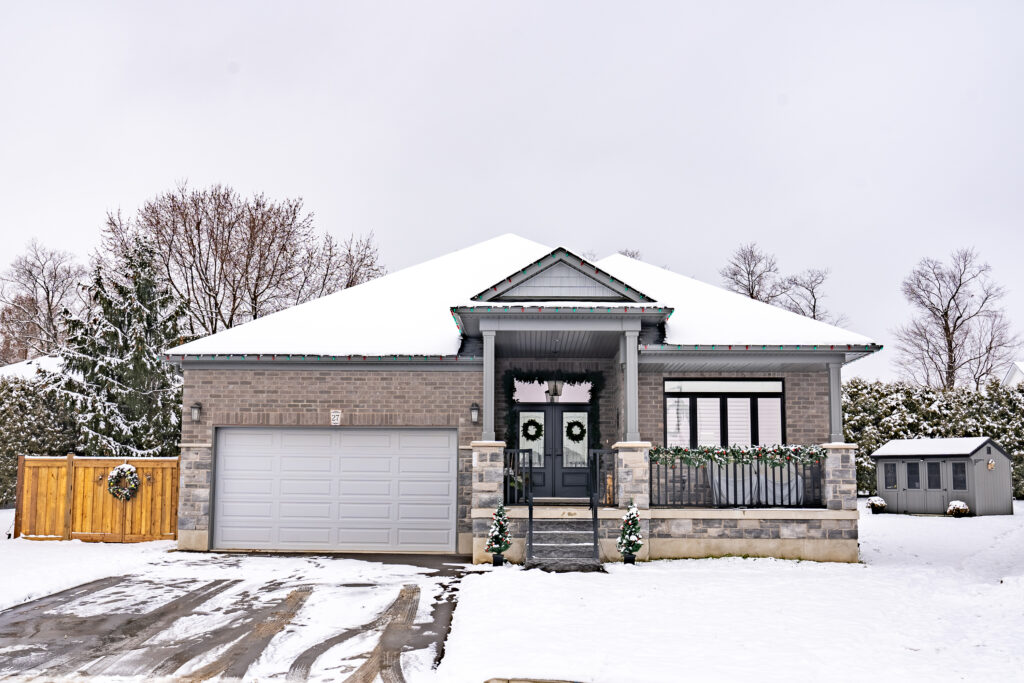
WrightHaven Homes Ltd., Fergus, ON: “Almora” – Finalist in the Best Production Net Zero Home category in the 2022 CHBA National Awards for Housing Excellence
Don’t fall for myths that say Net Zero Homes aren’t built for Canadian winters. For more information on how Net Zero Homes work, see the science behind a Net Zero Home.
Myth 2: Net Zero Homes are for the rich – I will never get payback on the initial investment of my Net Zero Home
Other common myths revolve around the idea that Net Zero Homes are “for the rich”. While many builders have made great strides in lowering the cost of Net Zero Homes in recent years, most Net Zero Homes do cost more than comparable code-built homes. The benefits of living in a Net Zero Home – like improved comfort, increased energy performance, lower utility bills, and healthier living – require extra insulation, better windows, and more advanced mechanical/ventilation systems, which do come with a higher upfront cost.
However, it’s important to keep in mind that the investment often gets spread out over the lifespan of your mortgage, rather than an initial lumpsum payment. This means that you don’t necessarily need extra cash in hand when you purchase. And while your monthly mortgage payments may be higher, depending on your household’s energy usage habits, you should benefit from lower utility bills each month.
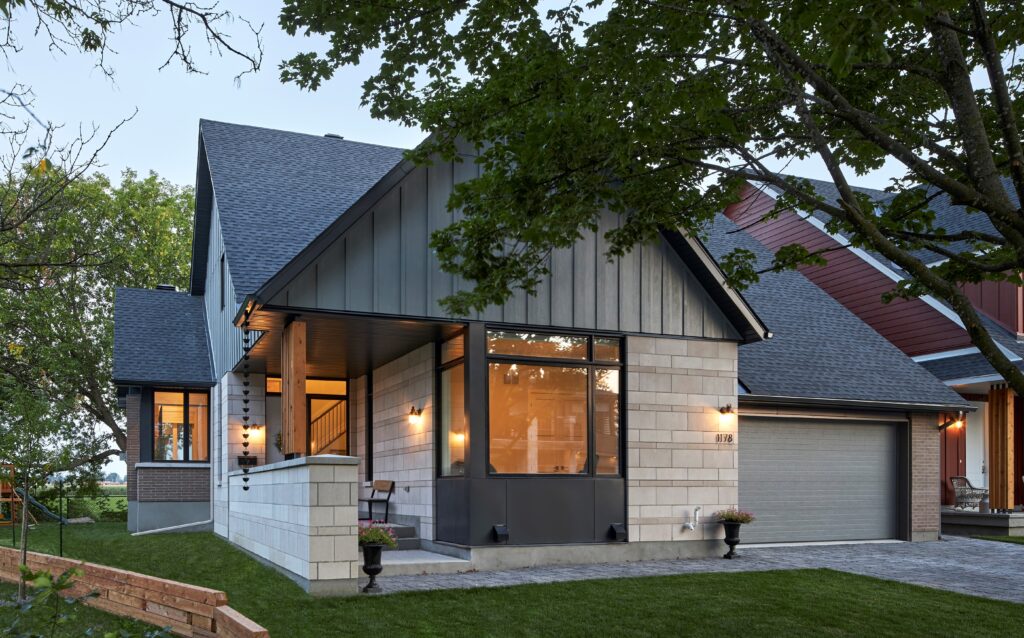
RND Construction, Ottawa, ON: “The Walnut” with Hobin Architecture – Finalist in the Best Production Net Zero Home category in the 2022 CHBA National Awards for Housing Excellence
Further, like any home, the overall cost of a Net Zero Home really comes down to the homeowner’s priorities. Of course, affordability is a concern for many home buyers, and Net Zero Energy may not be an option or a priority for many looking to enter or move up in the housing market. But it’s also true that while some people may prioritize more expensive selections and finishings, like quartz countertops, hardwood flooring, or 10’ ceilings, others may find it useful to add an electric vehicle (EV) charging station, for example. Ultimately, it’s the home buyer/owner’s choice about the type of home that best fits their lifestyle and desires.
And depending on the options selected for the home, the cost varies – even the location/climate zone and orientation of the home/roof impacts the upgrades needed to reach Net Zero. However, through the efforts of the CHBA Net Zero Council, the industry continues to innovate to drive down the costs to make Net Zero and Net Zero Ready Homes more affordable. There are some builders across Canada who have figured out how to achieve Net Zero at little to no extra cost than a conventional home when you compare monthly mortgage payments to the utility costs saved.

Big Block Construction, Saskatoon, SK: “Willowview Heights” – Finalist in the Best Production Net Zero Home category in the 2022 CHBA National Awards for Housing Excellence
Myth 3: Replacement parts for Net Zero Homes are overpriced
Some myths have pointed out that if a Net Zero Home’s renewable energy and mechanical systems are costly to implement, they must be equally costly to replace when the time comes. And while that may be true (at current prices, anyways), those same systems are often of higher quality, with greater longevity, than those installed in conventional homes – which means they typically need to be replaced or repaired less often. Take solar panels, for example. The price of solar panels has decreased dramatically (70-90%) over the past decade, and it continues to fall as the technology scales up. They’re also usually warrantied for 80% of their initial rated performance at 25 years, though they’ll still produce power at 30+ years. Even if you don’t plan on living in your home for 30 years, the long lifespan of the equipment adds value when you sell your home.
The bottom line is that every home will encounter maintenance and repair costs. While a Net Zero Home will likely cost more initially, it is built better and is more durable, it offers a more comfortable, quieter living experience with better indoor air quality, and it will provide improved home energy performance which will save you money on your utility bills and help to offset the added cost on your mortgage. And if you decide to move, you know that the home you’re selling will be able to compete with new homes from an efficiency standpoint, even if that’s years in the future.
Myth 4: Net Zero Homes don’t “breathe” like conventional homes
Other myths we see are related to a Net Zero Home’s airtightness. A question we often get is “if Net Zero Homes are so airtight, how can they let in fresh air?” The truth is that airtight houses breathe, but not through cracks and holes in the building envelope like many older homes. Rather, Net Zero Homes use advanced mechanical ventilation systems to move stale air out of the home and bring filtered fresh air in. These are called heat recovery ventilators (HRVs) and energy recovery ventilators (ERVs), and they’re required in all Net Zero and Net Zero Ready Homes qualified under the CHBA Net Zero Home Labelling Program. These filtered “fresh air systems” also reduce allergens and asthma triggers, such as dust, pollen, and outdoor air pollution for healthier living.
This, along with a more tightly built structure and better insulation, allows for better indoor air quality than a conventional home, as well as more even temperatures and less drafts for better comfort, greatly reduced exterior noise infiltration, and ultimately, lower utility bills. As a result, many Net Zero homeowners report a significant improvement in their living experience.
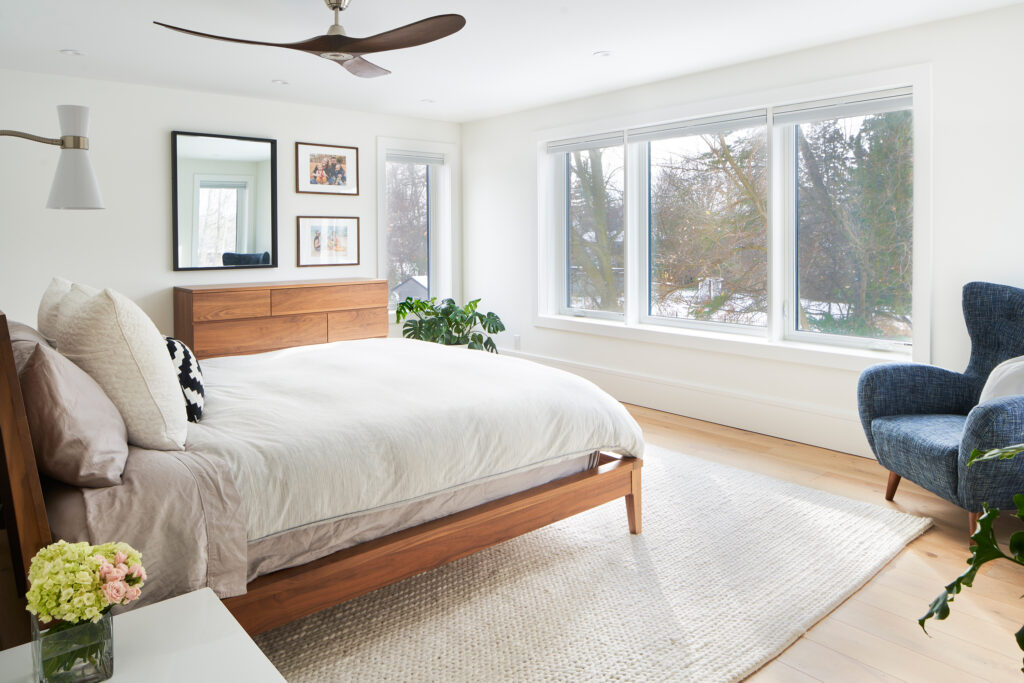
Primary bedroom in Net Zero Home by Sinclair Homes, Waterloo, ON: “White Pine Project” – Finalist in the Best Custom or Renovated Net Zero Home category in the 2022 CHBA National Awards for Housing Excellence
“But don’t mechanical ventilation systems use a lot of energy? How can the home stay Net Zero?” Well, each Net Zero Home requires a different amount of energy for the ventilation systems based on the home’s size, location (climate zone), design, and equipment. Whether the home is Net Zero or Net Zero Ready, the ventilation systems are so energy efficient, that on average they only use 3% of the home’s annual total energy, in a home that is up to 80% more energy efficient than a conventional new home.
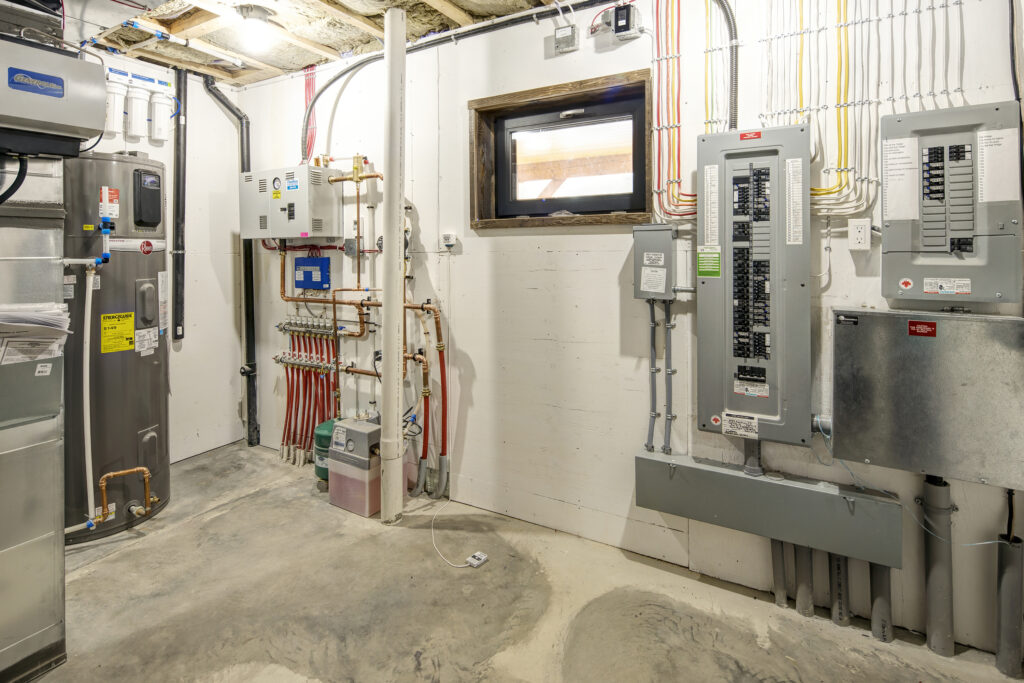
Mechanical room in Net Zero Home by STW Cutting Edge Carpentry Inc., Windermere, BC: “Middelveens” – Finalist in the Best Custom or Renovated Net Zero Home category in the 2022 CHBA National Awards for Housing Excellence
You may also have heard people say that airtight homes are “breeding grounds for mold.” This is a myth. Since a Net Zero Home’s built-in fresh air system constantly circulates air in and out of the home, the process also prevents moisture build up. Today’s Qualified Net Zero Builders/Renovators go through vigorous, state-of-the-art training delivered through CHBA’s Net Zero Home Labelling Program and have mastered the challenge of making houses airtight for energy efficiency and – at the same time – well-ventilated and durable for the health and comfort of the occupants.
Myth 5: Net Zero Homes can’t be spacious or beautiful
Common myths about Net Zero Homes are that they must be small and shaped like a box with tiny windows. Qualified Net Zero Builders and Renovators across Canada can deliver Net Zero Homes in all different shapes and sizes. Whether it’s a luxury mansion or a modest family abode, it is entirely possible to reach Net Zero with many home sizes and layouts.
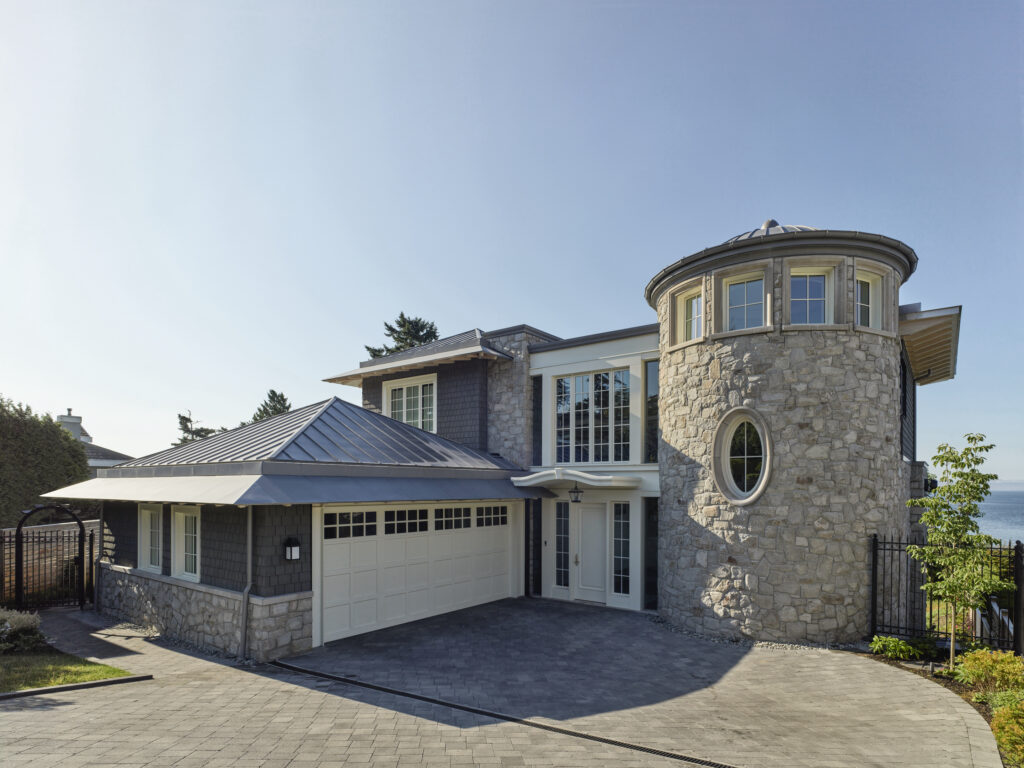
Naikoon Contracting Ltd., North Vancouver, BC: “White Rock Net Zero” with Capital Home Energy Inc. – Winner of the Best Custom or Renovated Net Zero Home category in the 2022 CHBA National Awards for Housing Excellence
Qualified Net Zero Builders and Renovators across Canada have repeatedly debunked these myths in the CHBA National Awards for Housing Excellence. To see some of the unique design styles they’ve accommodated, check out the finalists in the 2023 awards competition for Best Custom or Renovated Net Zero Home and Best Production Net Zero Home.
Myth 6: Net Zero Homes claim to be carbon emissions neutral
In the case of the CHBA Net Zero Home Labelling Program, the term “Net Zero Home” refers to the energy performance of the home, not carbon emissions neutrality. That said, since Net Zero Homes are extremely efficient, they have much less operational carbon emissions when compared to a code-built counterpart – but not zero.
Operational carbon emissions refers to the emissions associated with continually powering a home (i.e., the furnace, stove, lights, etc.). Net Zero Homes in Canada do not currently encompass carbon emissions from the materials produced to build the home. This is called embodied carbon emissions.
Further, the carbon emissions intensity of Net Zero Homes (as well as all other homes) varies considerably based on the emissions from local grids, as well as the type of energy the home uses. For example, provinces with mostly hydro-based electrical grids, such as Quebec and Manitoba, have lower carbon emissions intensities compared to provinces with natural gas or coal-fired electricity. Regardless of the type of energy coming from local grids, Net Zero Homes will always have lower operational carbon emissions than a code-built version of the same home.
Myth 7: The only benefit of a Net Zero Home is energy efficiency
Other myths stem from the idea that the only benefit of a Net Zero Home is energy efficiency. The truth is that Net Zero Homes do have immediate benefits for occupants other than improved energy performance, including better indoor air quality, a less drafty environment with more even temperatures throughout the home, lower energy bills, and virtually silenced exterior noise from lawnmowers, barking dogs, traffic, and more.

Jayman BUILT, Calgary, AB: “The Holly – Net Zero Certified” with 4 Elements Integrated Design Ltd. – Finalist in the Best Production Net Zero Home category in the 2023 CHBA National Awards for Housing Excellence
Overall, they provide greater comfort and healthier living than a conventional home. And for many people, knowing that they’re doing what they can to help reduce their impact on the environment is also a considerable benefit.
Learn more about all the benefits of a Net Zero Home.
Myth 8: Living in a Net Zero Home will negate my unrestrained energy usage
Any arguments that say Net Zero Homes will negate unrestrained energy usage are myths. Net Zero Homes are built extremely well, requiring less energy to run. But the overall energy usage is still dependent on the occupant’s lifestyle (i.e., Net Zero Homes do not negate an occupant’s excessive energy usage). That means you can’t expect to leave the lights on 24/7 or run the dryer every day of the week at no cost just because you’re living in a Net Zero Home. The Net Zero Program considers the occupant’s energy usage of lighting and appliances based on an estimated average, called the “baseload”. Some occupants may use less energy than the average, some use far more energy based on their lifestyle.
Net Zero Homes come equipped with an energy monitoring system that allows the occupant to see how much energy is being used. (Some can also help you find where phantom energy usage is coming from.) If the home has a renewable energy system installed, it will also show how much energy is being generated. This mandatory feature typically helps those living in a Net Zero Home stay aware of their energy usage, keeping them from overconsuming.
Myth 9: You can’t make an existing home Net Zero
Net Zero Homes are not simply a “new home” phenomenon. If you love your neighbourhood or if your existing property meets your family’s needs, but could use an energy upgrade, Net Zero can often be achieved through an energy efficient renovation.
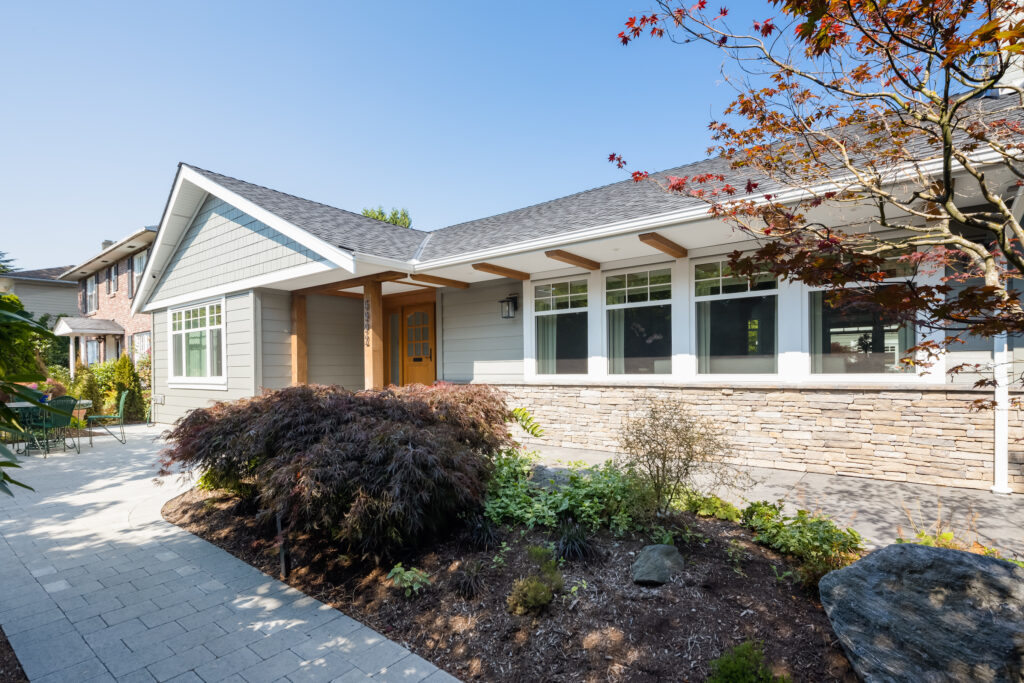
Net Zero renovation by My House Design Build Team Ltd., Surrey, BC: “Modern Cottage” with Capture Energy and Emphasis Design Studio Ltd. – Winner of the Best Custom or Renovated Net Zero Home category in the 2023 CHBA National Awards for Housing Excellence
CHBA’s Net Zero Home Labelling Program for Renovations recognizes renovators across Canada who are qualified to renovate homes to Net Zero/Net Zero Ready. It’s important to keep in mind that age, location, years of changes to building codes, and advancements in building science and technology have resulted in varying levels of energy efficiency in Canadas homes, so it’s important to talk to your renovator about whether your home is a good candidate for a Net Zero renovation. If you’re curious about whether your home is a good candidate for a Net Zero Renovation, take this quiz.
As you can see from these myths we’ve busted, if you’re looking to purchase an energy efficient new home or improve the energy performance of your current home, a Net Zero or Net Zero Ready Home might be the right option for you. There are many professionally trained Qualified Net Zero Builders and Renovators across Canada who can help you achieve your dream energy efficient home. Find one in your area through CHBA’s member directory.
For more information about Net Zero Homes in Canada, visit netzerohome.com.
